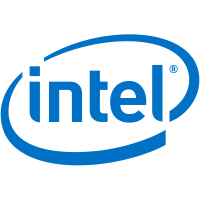NVIDIA GRID M3-3020 vs NVIDIA GeForce 840M
Vergleichende Analyse von NVIDIA GRID M3-3020 und NVIDIA GeForce 840M Videokarten für alle bekannten Merkmale in den folgenden Kategorien: Essenzielles, Technische Info, Videoausgänge und Anschlüsse, Kompatibilität, Abmessungen und Anforderungen, API-Unterstützung, Speicher, Technologien. Benchmark-Videokarten Leistungsanalyse: CompuBench 1.5 Desktop - Face Detection (mPixels/s), CompuBench 1.5 Desktop - Ocean Surface Simulation (Frames/s), CompuBench 1.5 Desktop - T-Rex (Frames/s), CompuBench 1.5 Desktop - Video Composition (Frames/s), CompuBench 1.5 Desktop - Bitcoin Mining (mHash/s), PassMark - G3D Mark, PassMark - G2D Mark, Geekbench - OpenCL, GFXBench 4.0 - Car Chase Offscreen (Frames), GFXBench 4.0 - Manhattan (Frames), GFXBench 4.0 - T-Rex (Frames), GFXBench 4.0 - Car Chase Offscreen (Fps), GFXBench 4.0 - Manhattan (Fps), GFXBench 4.0 - T-Rex (Fps), 3DMark Fire Strike - Graphics Score.
Unterschiede
Gründe, die für die Berücksichtigung der NVIDIA GRID M3-3020
- Grafikkarte ist neuer: Startdatum 2 Jahr(e) 2 Monat(e) später
- Etwa 16% höhere Boost-Taktfrequenz: 1306 MHz vs 1124 MHz
- 2.9x mehr Texturfüllrate: 52.24 GTexel / s vs 17.98 GTexel / s
- Etwa 67% höhere Leitungssysteme: 640 vs 384
- Etwa 94% bessere Gleitkomma-Leistung: 1,672 gflops vs 863.2 gflops
- 2.6x mehr Speichertaktfrequenz: 5200 MHz vs 2002 MHz
- Etwa 84% bessere Leistung in CompuBench 1.5 Desktop - Face Detection (mPixels/s): 41.997 vs 22.848
- 4.5x bessere Leistung in CompuBench 1.5 Desktop - Ocean Surface Simulation (Frames/s): 726.846 vs 162.594
- 2.8x bessere Leistung in CompuBench 1.5 Desktop - T-Rex (Frames/s): 3.442 vs 1.237
- Etwa 47% bessere Leistung in CompuBench 1.5 Desktop - Video Composition (Frames/s): 30.991 vs 21.15
- Etwa 62% bessere Leistung in CompuBench 1.5 Desktop - Bitcoin Mining (mHash/s): 155.196 vs 95.545
| Spezifikationen | |
| Startdatum | 18 May 2016 vs 12 March 2014 |
| Kerntaktfrequenz | 1033 MHz vs 1029 MHz |
| Boost-Taktfrequenz | 1306 MHz vs 1124 MHz |
| Texturfüllrate | 52.24 GTexel / s vs 17.98 GTexel / s |
| Leitungssysteme | 640 vs 384 |
| Gleitkomma-Leistung | 1,672 gflops vs 863.2 gflops |
| Speichertaktfrequenz | 5200 MHz vs 2002 MHz |
| Benchmarks | |
| CompuBench 1.5 Desktop - Face Detection (mPixels/s) | 41.997 vs 22.848 |
| CompuBench 1.5 Desktop - Ocean Surface Simulation (Frames/s) | 726.846 vs 162.594 |
| CompuBench 1.5 Desktop - T-Rex (Frames/s) | 3.442 vs 1.237 |
| CompuBench 1.5 Desktop - Video Composition (Frames/s) | 30.991 vs 21.15 |
| CompuBench 1.5 Desktop - Bitcoin Mining (mHash/s) | 155.196 vs 95.545 |
Benchmarks vergleichen
GPU 1: NVIDIA GRID M3-3020
GPU 2: NVIDIA GeForce 840M
| CompuBench 1.5 Desktop - Face Detection (mPixels/s) |
|
|
||||
| CompuBench 1.5 Desktop - Ocean Surface Simulation (Frames/s) |
|
|
||||
| CompuBench 1.5 Desktop - T-Rex (Frames/s) |
|
|
||||
| CompuBench 1.5 Desktop - Video Composition (Frames/s) |
|
|
||||
| CompuBench 1.5 Desktop - Bitcoin Mining (mHash/s) |
|
|
| Name | NVIDIA GRID M3-3020 | NVIDIA GeForce 840M |
|---|---|---|
| CompuBench 1.5 Desktop - Face Detection (mPixels/s) | 41.997 | 22.848 |
| CompuBench 1.5 Desktop - Ocean Surface Simulation (Frames/s) | 726.846 | 162.594 |
| CompuBench 1.5 Desktop - T-Rex (Frames/s) | 3.442 | 1.237 |
| CompuBench 1.5 Desktop - Video Composition (Frames/s) | 30.991 | 21.15 |
| CompuBench 1.5 Desktop - Bitcoin Mining (mHash/s) | 155.196 | 95.545 |
| PassMark - G3D Mark | 1096 | |
| PassMark - G2D Mark | 151 | |
| Geekbench - OpenCL | 5771 | |
| GFXBench 4.0 - Car Chase Offscreen (Frames) | 2085 | |
| GFXBench 4.0 - Manhattan (Frames) | 2736 | |
| GFXBench 4.0 - T-Rex (Frames) | 3191 | |
| GFXBench 4.0 - Car Chase Offscreen (Fps) | 2085 | |
| GFXBench 4.0 - Manhattan (Fps) | 2736 | |
| GFXBench 4.0 - T-Rex (Fps) | 3191 | |
| 3DMark Fire Strike - Graphics Score | 503 |
Vergleichen Sie Spezifikationen
| NVIDIA GRID M3-3020 | NVIDIA GeForce 840M | |
|---|---|---|
Essenzielles |
||
| Architektur | Maxwell | Maxwell |
| Codename | GM107 | GM108 |
| Startdatum | 18 May 2016 | 12 March 2014 |
| Platz in der Leistungsbewertung | 1217 | 1235 |
| Typ | Workstation | Laptop |
Technische Info |
||
| Boost-Taktfrequenz | 1306 MHz | 1124 MHz |
| Kerntaktfrequenz | 1033 MHz | 1029 MHz |
| Gleitkomma-Leistung | 1,672 gflops | 863.2 gflops |
| Fertigungsprozesstechnik | 28 nm | 28 nm |
| Leitungssysteme | 640 | 384 |
| Texturfüllrate | 52.24 GTexel / s | 17.98 GTexel / s |
| Anzahl der Transistoren | 1,870 million | |
| Thermische Designleistung (TDP) | 33 Watt | |
Videoausgänge und Anschlüsse |
||
| Display-Anschlüsse | No outputs | No outputs |
Kompatibilität, Abmessungen und Anforderungen |
||
| Schnittstelle | PCIe 3.0 x16 | PCIe 3.0 x8 |
| Länge | 267 mm | |
| Zusätzliche Leistungssteckverbinder | 1x 8-pin | |
| Busunterstützung | PCI Express 2.0, PCI Express 3.0 | |
| Laptop-Größe | medium sized | |
API-Unterstützung |
||
| DirectX | 12.0 (11_0) | 12.0 (11_0) |
| OpenGL | 4.6 | 4.5 |
Speicher |
||
| Maximale RAM-Belastung | 4 GB | 4 GB |
| Speicherbandbreite | 83.2 GB / s | 16.02 GB / s |
| Breite des Speicherbusses | 128 Bit | 64 Bit |
| Speichertaktfrequenz | 5200 MHz | 2002 MHz |
| Speichertyp | GDDR5 | DDR3 |
| Gemeinsamer Speicher | 0 | |
Technologien |
||
| CUDA | ||
| GameWorks | ||
| GeForce Experience | ||
| GPU Boost | ||
| Optimus | ||










